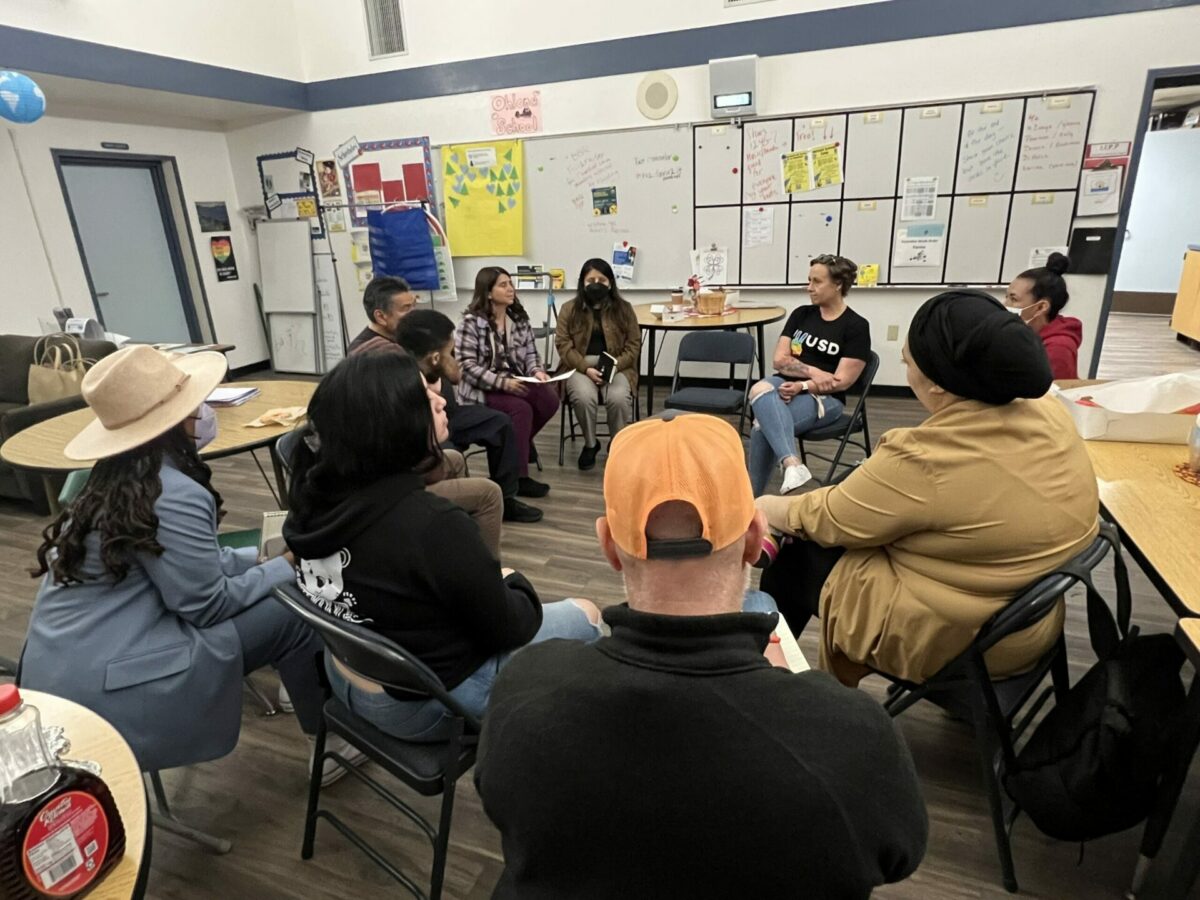Category: Listening Sessions, Personal Stories, Poverty News & Policy Updates, The Safety Net

July 06th, 2023
by Devon Gray and Greg Kaufmann
On March 10, when a long-neglected levee broke and floods devastated the town of Pajaro in California’s northern Monterey County, the government failed at all levels to respond as more than 3,000 people evacuated.
Nearly three months later, as part of our antipoverty organization’s statewide listening tour, we visited Ohlone Elementary in Pajaro to hear from parents, faculty, and staff about what they experienced, how they are faring, and what could have been done to better protect people and help them recover.
What we found is a community that is used to going it alone, ignored by the county and state to the point where many have concluded that the government will never be there for them. “It was dire even before the flood,” said one parent, noting that affordable housing is scarce and it was not uncommon for up to five families to share “a small, substandard apartment.”
As a result, community members look to one another to try to get by through a kind of mutual aid network. But it’s far from sufficient.
An unincorporated community of approximately 3,500 people, Pajaro is located in the same county that is home to Carmel, Monterey, Pacific Grove, and many other wealthy enclaves in the state that has the fourth largest economy in the world. With so much nearby wealth, the non-response certainly wasn’t due to a lack of resources.
Pajaro is comprised of mostly farm workers. Despite homes being under two to three feet of water and highly toxic runoff from the pesticides used on strawberries, government inaction didn’t lead to the kind of public pressure and outrage that would occur if virtually any white, wealthy town were to experience a similar disaster.
Ever since the flood, the Ohlone Elementary community has pooled their personal resources to provide food, clothing, rent, and other necessities. The overwhelming majority of students are in farm worker families, and after the evacuation many returned to find their homes, cars, and possessions destroyed. Parents were initially concerned about sending their children back to school when they lacked proper clothing. As a result, the school converted a classroom into a “care closet” filled with food, clothing, diapers, and other household needs. They received thousands of donations from individuals, businesses, and community groups.

“Our attitude is if you need it, take it,” said one teacher. “That’s how it should be.”
This attitude of trust and respect contrasts greatly with what many families encountered when they crossed the Pajaro River to shelters in Watsonville, located in neighboring Santa Cruz County. That county had done its job to fortify its levy over the years and mobilized to help impacted people, in contrast to Monterey County. However, people reported that the shelters treated them as if they were a burden—an experience that is widely shared by people when they need assistance, as we’ve heard throughout our statewide tour.
In addition to helping families with basic necessities, Ohlone teachers are creating space for students to process the traumas they experienced during the evacuation, in shelters, and hotels, and as they returned to uprooted lives. This is due in part to a chronic shortage of mental health counselors. The school shares one social emotional counselor with another elementary school and contracts out limited services with another. Together, they are able to service about five students at a time and have constant waitlists for individual counseling.
A third grade teacher reported that the county gave families wheelbarrows, shovels, and brooms and asked them to clean up the toxic sludge when the waters receded. Community members set up taco trucks and other food giveaways as residents tied bandanas around their faces and did the backbreaking work of hauling mud bucket-by-bucket. “Even before the flood, we saw evidence of exposure to pesticides in our students,” the teacher said. “Elevated levels of learning problems, asthma, and cancer. This flooding disaster compounds and exacerbates this for students and their families.”
It wasn’t until April 4 that Pajaro was declared a disaster and made eligible for FEMA resources. The community felt that the delay happened because there was too much focus on a threshold for the number of damaged buildings rather than on how many families were impacted—especially in a place where so many families share housing. In addition, the Newsom administration recently announced $95 million from the state’s Rapid Response Fund to assist undocumented immigrants who are not FEMA-eligible. So far the Ohlone Elementary community is not seeing evidence of change. One parent said through a translator that the only change was that “the county said they would come to clean the streets in two weeks. But that was a month ago and they still haven’t come to clean.”
In the meantime, teachers continue to utilize platforms like Donors Choose and Amazon wish lists to help fill the void of decades of systemic neglect. This is what happens when we treat people as disposable. One summarized their message for elected representatives, “It’s about basic human dignity. Give a damn.”
Devon Gray is the president of End Poverty in California (EPIC). Previously he served as a special adviser in Governor Gavin Newsom’s administration.
Greg Kaufmann is EPIC’s chief advisor for narrative and storytelling and a contributing writer for The Nation.
This article originally appeared on Newsweek.